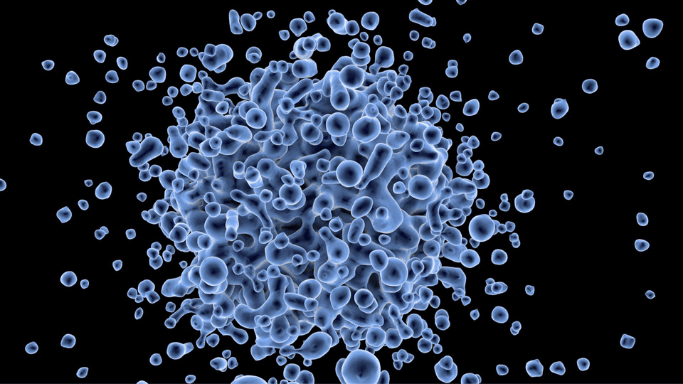
How Does NAD Help with Chronic Fatigue?
Feeling exhausted despite getting enough sleep? Your cells might be running on empty.
Chronic fatigue syndrome (CFS) goes far beyond ordinary tiredness. It’s an intense, ongoing exhaustion that doesn’t improve with rest.
Even simple tasks become major hurdles. These symptoms can debilitate daily functioning for months or years.
That’s where NAD+ comes into play. NAD+ (nicotinamide adenine dinucleotide) is your body’s natural cellular fuel. This vital coenzyme is found in every cell.
Research suggests people with CFS may have compromised NAD+ levels. This potentially explains why their cellular energy production falters.
In this guide, you will discover how NAD+ works at the cellular level. You’ll learn the specific mechanisms by which it may help combat chronic fatigue. You’ll also see what clinical evidence reveals about its therapeutic potential.
Key Takeaways
- NAD+ is a key player in how your body creates energy every day.
- Chronic fatigue may be linked to low NAD+ levels inside your cells.
- Your NAD+ needs are unique. Testing can reveal what’s happening beneath the surface.
- There are science-backed ways to support your NAD+ levels.
The Role of NAD+ in Cellular Energy
Think of NAD+ as the spark plug that ignites cellular engines. It powers everything from basic metabolism to DNA repair.
This vital coenzyme acts as a primary electron donor. It powers the mitochondria (your cellular batteries).
NAD+ is crucial for oxidative phosphorylation. This process converts nutrients from food into ATP. ATP is the energy currency your cells need to thrive.
Essentially, NAD+ helps turn what you eat into usable power for every cell.
The balance between NAD+ and NADH is also critical. This NAD+/NADH ratio acts like a cellular health gauge.
It influences major metabolic pathways like glycolysis. It also affects the citric acid cycle. Maintaining this balance helps your cells efficiently produce energy.
When NAD+ levels drop, problems arise. This can happen due to various factors. The natural aging process is one major cause.1
Your cell’s ability to generate energy becomes affected. This may lead to reduced ATP supply. Your overall vitality could be impacted as a result.
NAD+ Metabolism in Chronic Fatigue Conditions

Learning about NAD+ metabolism disruptions helps explain chronic fatigue. It shows why standard treatments often don’t solve the underlying exhaustion.
ME/CFS and Post-Viral Fatigue
Studies show that NAD+ levels drop in people with ME/CFS2. This reduction causes severe fatigue.
Viral infections may trigger this NAD+ depletion. They do this by activating inflammation.
Inflammation diverts tryptophan into the kynurenine pathway. This ultimately lowers NAD+ availability. The result is an ongoing energy shortage.
Traditional treatments frequently fail because they focus only on symptoms. They overlook the deeper issue. Compromised NAD+ metabolism perpetuates fatigue.
The Mitochondrial Connection
Mitochondria serve as ground zero for fatigue development. NAD+ deficiency impairs mitochondrial function.
This leads to reduced ATP synthesis. It also decreases cellular energy overall.
This creates a fatigue spiral effect. Compromised energy production further depletes NAD+ stores. The cycle of exhaustion perpetuates itself.
Recovery becomes increasingly difficult without targeted intervention.
How NAD+ Fights Fatigue

Boosting your NAD+ activates special proteins called sirtuins.3 These proteins are essential for repairing and protecting your cells.
Sirtuins help your cells recover quickly from daily stress. They also help repair damage. This enhances overall energy and resilience.
Beyond energy, NAD+ supports your immune system’s function.4 It reduces inflammation and restores balance.
By easing inflammation, NAD+ breaks the fatigue-inflammation loop. This helps your body return to healthier energy levels.
Addressing fatigue effectively requires tackling multiple connected pathways simultaneously. Restoring NAD+ offers comprehensive support.
It supports energy metabolism, immune function, and inflammation control. This makes recovery more achievable and sustainable.
NAD+ optimization may also support cardiovascular disease prevention. Healthy NAD+ levels promote overall cellular function throughout your body.
Clinical Evidence for NAD+ Supplementation

The research supporting NAD+ supplementation for fatigue conditions continues to grow. Several key studies demonstrate meaningful improvements in patient outcomes.
A landmark 12-week study involved 207 ME/CFS patients. The trial was randomized, double-blind, and placebo-controlled.
Participants received 200mg CoQ10 plus 20mg NADH daily. They experienced significant reductions in cognitive fatigue perception.5
Overall fatigue scores improved compared to placebo groups. The study also showed notable improvements in health-related quality of life.
Benefits persisted throughout the treatment period.
Emerging research suggests NAD+ supplementation may help alleviate persistent symptoms. This includes symptoms of Long COVID.
Studies indicate that NAD+ could support cellular function. It may promote recovery by addressing underlying mitochondrial dysfunction.
Research also shows NAD+ supplementation improves muscle function. It protects against muscle damage and enhances running capacity.
Athletes with optimal NAD+ levels show reduced fatigue. They also demonstrate improved endurance performance.
Recognizing NAD+ Deficiency

The hallmark of NAD+ deficiency is persistent fatigue. Even adequate sleep or rest doesn’t fix this exhaustion.
Unlike normal tiredness, this exhaustion stems from your cells’ inability to produce sufficient ATP energy. You feel drained regardless of how much you sleep.
Low NAD levels frequently manifest as mental fog and memory lapses. When NAD+ levels drop, your brain struggles to produce energy.
Your brain needs this energy for optimal cognitive function. Low levels lead to sluggish thinking and mental cloudiness.
Research shows this deficiency can worsen neuroinflammation. It also increases oxidative stress. Both are harmful to cognitive health.
You might notice that everyday tasks leave you unusually exhausted. You may need much longer to recover from activities.
Activities that previously felt manageable now seem overwhelming. This poor recovery indicates compromised cellular energy production.
It suggests your mitochondria aren’t functioning at optimal capacity.
Rather than making assumptions about your NAD+ status, you can test them precisely. This allows you to track your progress with real data.
You can adjust your approach based on actual measurements. This is better than just relying on how you feel.
The Path Forward: Testing and Boosting NAD Levels

Personalized NAD+ support works best because everyone’s needs are unique. NAD+ levels vary significantly based on several factors.
Age, genetics, lifestyle, and health status all play roles.
Instead of guessing, the Intracellular NAD Test provides accurate measurement. This convenient at-home test measures NAD+ levels directly within your cells.
It provides precise data about your current status. The test establishes a baseline for optimization.
Unlike blood tests that only show circulating levels, this test reveals what’s actually happening inside your cells. This is where NAD+ does its work.
Once you know your NAD+ status, you can then supplement effectively. Jinfiniti’s Vitality NAD+ Booster takes a synergistic approach by combining four clinically-validated compounds.
These compounds work together to increase NAD levels.
The most effective strategy follows a test-supplement-retest cycle. Begin with baseline testing, then start supplementation with appropriate dosing.
Retest after 2-3 months to verify results. Adjust dosage if needed based on your results.
This data-driven approach ensures you achieve optimal NAD+ levels. It also helps you maintain them for sustained energy and vitality.
Quick Review
NAD+ is essential for cellular energy production. When levels drop, chronic fatigue can result.
Clinical studies show NAD+ supplementation can improve energy and reduce fatigue symptoms. Testing reveals your personal NAD+ status.
Targeted supplementation based on your results offers a potential approach to restoring energy.
Referenced Sources:












